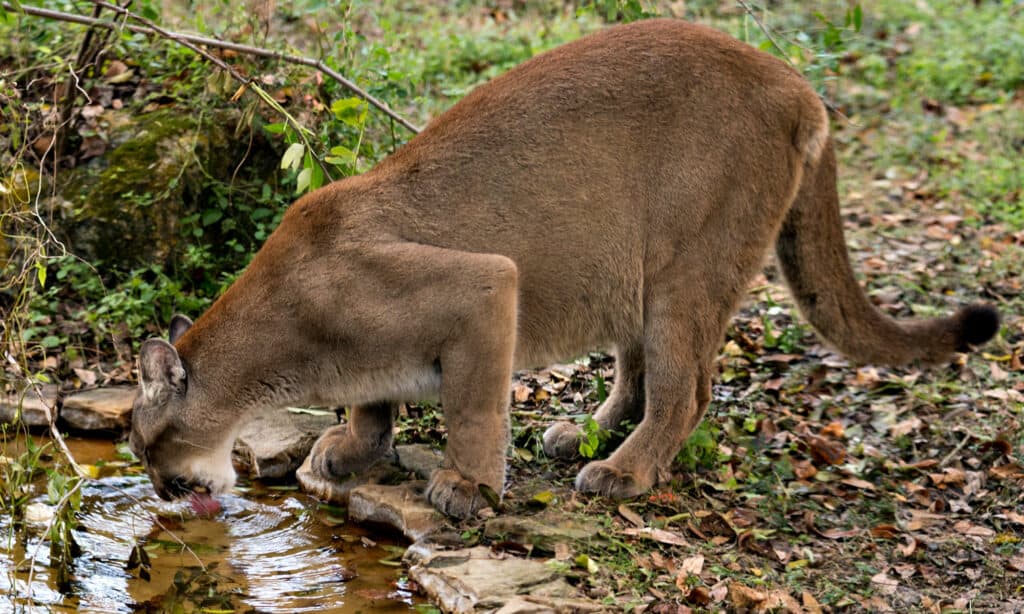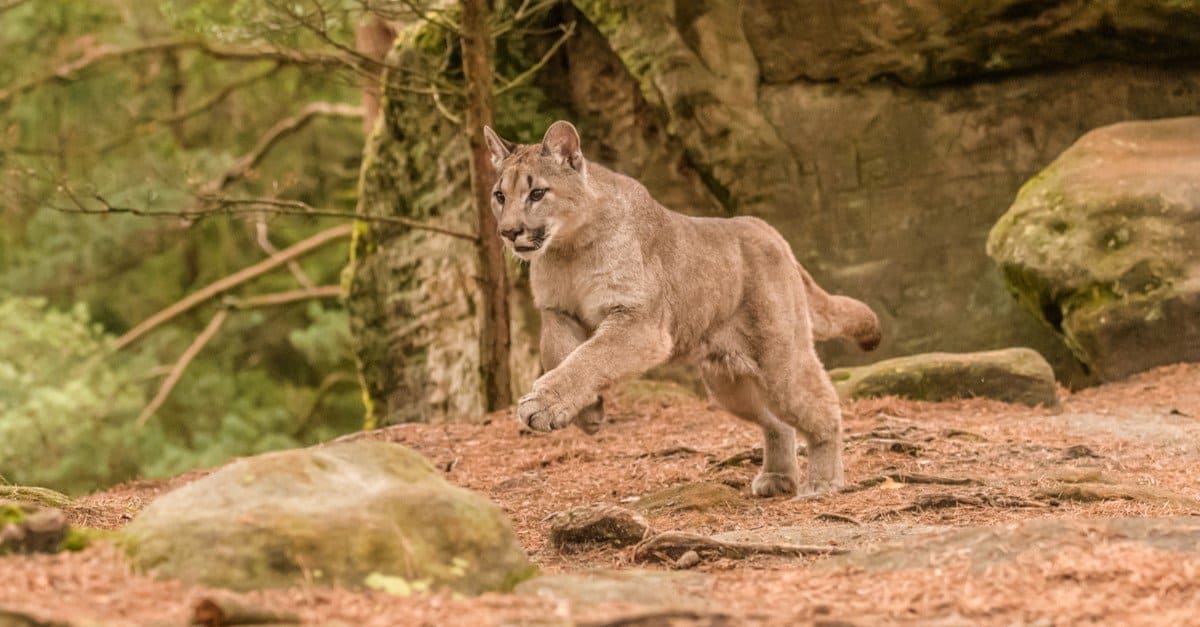Introduction
The official state animal of Florida, the Florida panther, has an interesting backstory of how it was adopted by the state legislature. While the species serves as a symbol of the state, it is isolated to only one portion of Florida. Furthermore, the panther maintains extremely small population numbers, making it a rare sight. Human interference and habitat loss frequently threaten this endangered species, which has led to conservationists coming together to save the creature. Discover the story behind how the Florida panther became the official state animal and find out what efforts are being made to conserve its population.
Background on the Florida Panther
The Florida panther is a type of cougar, also known as a mountain lion, that exists in the Western Hemisphere. This species of panther primarily exists in Florida, specifically in the southwest portion. In fact, very few Florida panthers exist; they are highly isolated and only mate among themselves. One interesting fact about the Florida panther is that it was one of the first animals mentioned in the Endangered Species Act, which was passed in 1973.
Florida panthers prefer subtropical climates, living in habitats like marshes, forests, grasslands, and more. People most frequently encounter Florida panthers on roadways, which the species will travel on or cross over to move from one habitat to another in search of prey. While the Florida panther only exists in this state, its distribution was much greater in the past. In fact, states like Tennessee, Louisiana, and South Carolina were once home to the Florida panther. The animal’s decreased distribution demonstrates the severity of its dwindling population numbers. Furthermore, it proves that the endangered species is in dire need of conservation.
The coloration of the Florida panther ranges from tan to rust-colored to light brown. Males of this species typically weigh between 100 and 160 pounds. Females, on the other hand, record a weight ranging from 65 to 100 pounds. Most Florida panthers measure between six and seven feet in length, including their tail. Juveniles of this species are generally born with patterned fur; they have black or dark brown spots across their body. The prey of Florida panthers includes white-tail deer, rabbits, birds, wild hogs, and even alligators.

Habitats of the Florida panther are grasslands, marshes, and forests.
©jo Crebbin/Shutterstock.com
How the Florida Panther Became the Official State Animal
In 1981, Education Commissioner Ralph Turlington and Representative William Bankhead worked together to promote the Florida panther as the state animal of Florida. Originally, Bankhead had proposed a bill to make the polar bear the state animal. However, Florida is not home to any polar bears, as its climate is subtropical, hot, and humid. Polar bears require cold climates for survival.
The polar bear was not a legitimate animal that would be adopted by the state. Rather, the polar bear in the bill acted as a placeholder until another state animal was chosen. Turlington determined that students across the state should be able to choose Florida’s official state animal. Turlington believed by allowing students to vote on the animal, they would learn about participation in a democracy and about the environment.
Thus, Turlington conducted a poll in which students chose the state animal. Other animals listed on the poll included the alligator, Key deer, and manatee. However, the manatee was already Florida’s state marine animal, so it made little sense for it to be chosen. Furthermore, students could write in an animal of their choice.
Turlington reported the poll results to the state legislature. The Florida panther had won the poll with over 211,000 votes. The Key deer and alligator clearly lost the vote, but the manatee, perhaps surprisingly, placed second. In addition, many students chose to write in an animal, including species like camels, rabbits, rattlesnakes, and dolphins. In 1982, the state legislature adopted the Florida panther as Florida’s official state animal.

Endangerment of the Florida Panther
The Florida panther is considered an endangered species for many reasons. Primarily, the animal is most threatened by humans through human interaction, habitat fragmentation, and habitat loss. In addition, Florida panthers often use roadways for travel, making them susceptible to injury by cars or other vehicles that do not see them. In fact, several Florida panther fatalities occur every year due to car accidents.
Furthermore, invasive species, such as the Burmese python, threaten the Florida panther. The Burmese python is a snake species that has become invasive in the Florida Everglades. This snake often minimizes other animal populations by either consuming them or competing with them for food. In the case of the Florida panther, the Burmese python often stalks and eats the same prey as the panther.
Thus, the two species are in competition with one another for food. When the Burmese python, which has greater population numbers than the Florida panther, consumes all available prey in a certain area, the panther suffers. As a result, the Florida panther may have to travel elsewhere for prey or, simply, begins to starve. The Burmese python poses this threat to numerous other species in the state, too.
Florida Panther Endangerment Effects on Other Species
Furthermore, decreased Florida panther populations affect other animals in the region. Florida panthers are a keystone species at the top of the food chain. A keystone species is an animal or other organism that controls or protects an ecosystem containing other organisms. The Florida panther controls the numbers of other animal populations by hunting for them as prey.
For instance, the wild hog is a prey of the Florida panther. An increase in wild hog populations can leave negative effects on the environment and on humans, such as disease, contaminated water supply, and soil erosion. Therefore, the Florida panther’s control over wild hog populations is necessary to ensure that these adverse effects do not occur, so the ecosystem maintains stability. When Florida panthers are not able to control these populations, ecosystems become overrun and destroyed by invasive species. This is also the case with the Burmese python, which has no natural predators in Florida, making it an invasive species that overruns the Everglades.
Conservation of the Florida Panther
Florida panther populations thrived throughout the southeastern United States before European settlement in the 1600s. When Europeans arrived, they made sweeping changes to the environment by constructing homes and clearing out forested areas. In addition, Europeans feared big cats and often killed panthers in the region. By the year 1900, Florida panther populations numbered approximately 500 individuals.
The government outlawed the hunting of the Florida panther in 1958, but it was already too late. In fact, the population had decreased by between 2.4% and 4% due to hunting and habitat loss by 1967. During this period, the Florida panther was considered threatened with extinction. When the Endangered Species Act was passed in 1973, the Florida panther made the list of endangered species.
However, some conservation efforts have made great strides in increasing and stabilizing Florida panther populations. For example, the Florida Forever program and the Rural and Family Lands Protection Program both work to conserve the habitat of Florida panthers throughout the state. In addition, the Florida Wildlife Corridor Act in 2021 protected 18 million acres within the state, many of which serve as Florida panther habitats.
Other conservation organizations unassociated with the state government have also banded together to save the Florida panther. As the state animal, the Florida panther represents a certain amount of state pride in its residents. Furthermore, the creature has inspired sources of entertainment, such as the Florida Panthers National Hockey League team. Thus, the animal remains extremely important to the state.
The road toward conservation of the animal both protects the environment and ensures that the state symbol and Florida pride are maintained. Now, Florida panther population numbers appear to be on the rise; experts estimate the current population of Florida panthers in the state to measure a little over 200 individuals.

As a state symbol, the conservation of the Florida panther is particularly important.
©iStock.com/Rejean Bedard
Thank you for reading! Have some feedback for us? Contact the AZ Animals editorial team.








